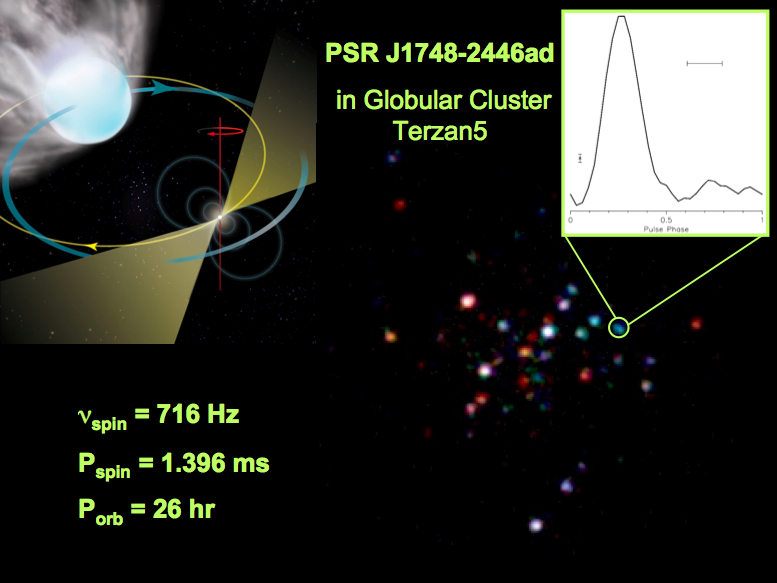| Description: | Millisecond pulsars are neutron stars that spin hundreds of times a second. Their fantastic rotation rates are commonly believed to be the result of an accretion phase in which an old neutron star accretes both matter and angular momentum from a binary companion, and is "recycled" to become a radio pulsar once again - now spinning much faster than before and with a significantly reduced magnetic field strength. I will discuss our current understanding of radio millisecond pulsars, focusing primarily on those that are found in Galactic globular clusters, but also discussing those objects found in the field. Globular clusters are breeding grounds for millisecond pulsars because their compact cores promote stellar interactions which can form systems capable of recycling a neutron star. Recent, targeted surveys have greatly increased the number of known millisecond pulsars in globular clusters, allowing us to revisit basic aspects of their nature, such as their distribution in mass, orbital parameters, and spin rate. Such stars have the potential to strongly constrain the neutron star equation of state and to probe the physics of strong gravity.
Above: Pulsar J1748-2446ad, the fastest-spinning pulsar known (upper right: cumulative pulse profile from Hessels et al. 2006). Located in the Galactic globular cluster Terzan 5, J1748-2446ad is visible as an X-ray point source (lower right: Chandra image from Heinke et al. 2006) and is in a 26-hr orbit with a companion star (upper left: artist's conception by Bill Saxton). PSR J1748-2446ad is likely ablating its companion, creating a screen which eclipses the pulsar for roughly half of its orbit.
|

